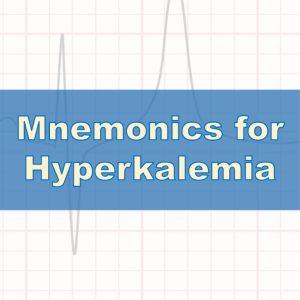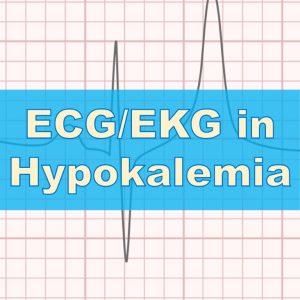Newsletter Hypocalcemia Mnemonic Mnemonics in Hypocalcemia It can be a...
Read More- Newsletter
Remembering Hyperkalemia: An Essential Mnemonic for Medical Professionals
Hyperkalemia is a medical condition characterized by elevated levels of potassium in the bloodstream. This electrolyte imbalance can lead to serious complications, such as cardiac arrhythmias and even life-threatening situations. As medical professionals, it is crucial to remember the key aspects of hyperkalemia for accurate diagnosis and prompt treatment. One effective way to aid memorization is through mnemonics – memory aids that use acronyms or phrases to recall information easily. In this blog article, we will present a comprehensive hyperkalemia mnemonic to help healthcare practitioners quickly recognize and respond to this critical condition.
The Hyperkalemia Mnemonic: “POTASSIUM“
“POTASSIUM” is an easy-to-remember mnemonic that will guide you through the essential aspects of hyperkalemia. Each letter represents a critical aspect or cause of hyperkalemia that will help you remember the condition more effectively. Let’s break it down:
P – Potassium-rich Diet:
Hyperkalemia can occur due to excessive consumption of potassium-rich foods or supplements. Patients with kidney problems or those taking certain medications may be at higher risk. Remember to inquire about dietary habits and supplements when evaluating hyperkalemia.
O – Overdose of Potassium Supplements:
Excessive intake of potassium supplements can lead to a sudden spike in potassium levels. Always ask about over-the-counter medications or prescribed supplements to identify potential sources of increased potassium.
T – Type I Renal Tubular Acidosis (RTA):
Type I RTA is a condition where the kidneys cannot effectively excrete acid, leading to metabolic acidosis. This acidosis can cause potassium to shift from cells into the bloodstream, contributing to hyperkalemia.
A – Adrenal Insufficiency:
In adrenal insufficiency, the adrenal glands fail to produce sufficient hormones, including aldosterone. Aldosterone is responsible for regulating potassium levels in the blood. With low aldosterone levels, potassium excretion is reduced, leading to hyperkalemia.
S – Spironolactone and other potassium-sparing diuretics:
Certain diuretics, such as spironolactone, amiloride, and triamterene, can reduce potassium excretion, leading to hyperkalemia. Keep in mind the patient’s medication history, as it is vital in diagnosing hyperkalemia.
S – Shift of Potassium from Intracellular to Extracellular:
Various conditions, like acidosis, insulin deficiency (as seen in uncontrolled diabetes), and tissue damage (e.g., rhabdomyolysis), can cause potassium to move from inside cells to the extracellular space, resulting in hyperkalemia.
I – Insulin Deficiency and Diabetic Ketoacidosis (DKA):
Insulin facilitates the uptake of glucose and potassium into cells. In diabetic ketoacidosis (DKA) or uncontrolled diabetes, insulin deficiency leads to impaired cellular uptake of potassium, causing hyperkalemia.
U – Uremia:
Hyperkalemia is commonly seen in patients with kidney dysfunction or end-stage renal disease due to reduced potassium excretion. Monitor potassium levels regularly in patients with kidney problems.
M – Medications (ACE Inhibitors, NSAIDs, and more):
Certain medications, such as ACE inhibitors (e.g., enalapril, lisinopril) and NSAIDs (nonsteroidal anti-inflammatory drugs), can interfere with renal potassium excretion and contribute to hyperkalemia.
Conclusion
Hyperkalemia is a potentially life-threatening condition that requires prompt recognition and management. The “POTASSIUM” mnemonic provides an effective memory aid for medical professionals to quickly recall the key aspects and causes of hyperkalemia. By using this mnemonic during patient evaluations, you can ensure early diagnosis and appropriate intervention, thus preventing complications and potentially saving lives. Always remember to follow institutional guidelines and consult with specialists as needed, but let “POTASSIUM” be your valuable companion in managing hyperkalemia efficiently and effectively.
ABC Nursing – Airway, Breathing, Circulation
Newsletter ABC in Nursing – Assessment & Priority ABC in...
Read MoreHyperkalemia Mnemonic
Newsletter Hyperkalemia Mnemonic Mnemonic for Hyperkalemia It can be a...
Read MoreCauses of Hyperkalemia
Newsletter Remembering Hyperkalemia: An Essential Mnemonic for Medical Professionals Hyperkalemia...
Read More- Library





